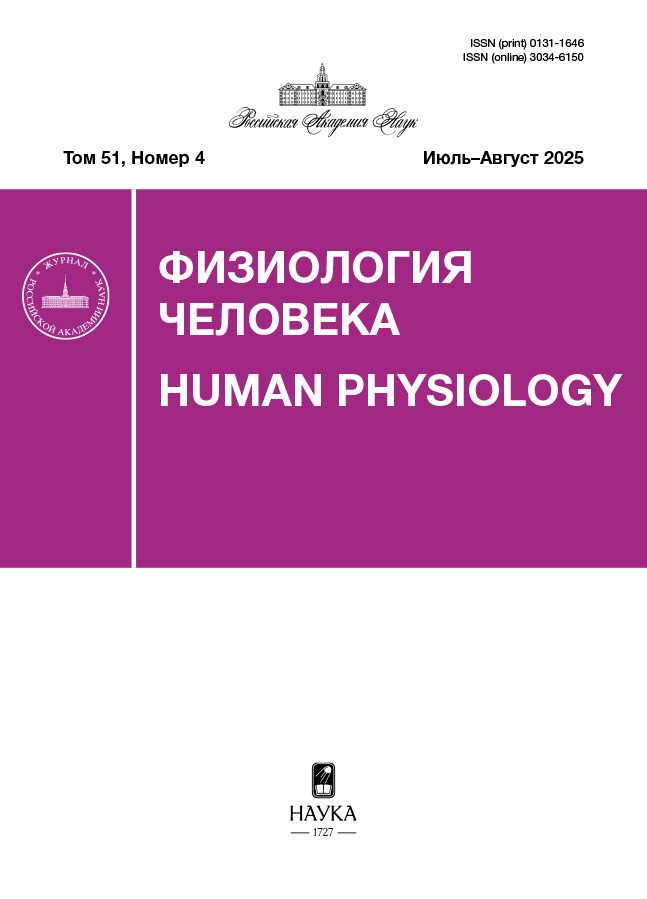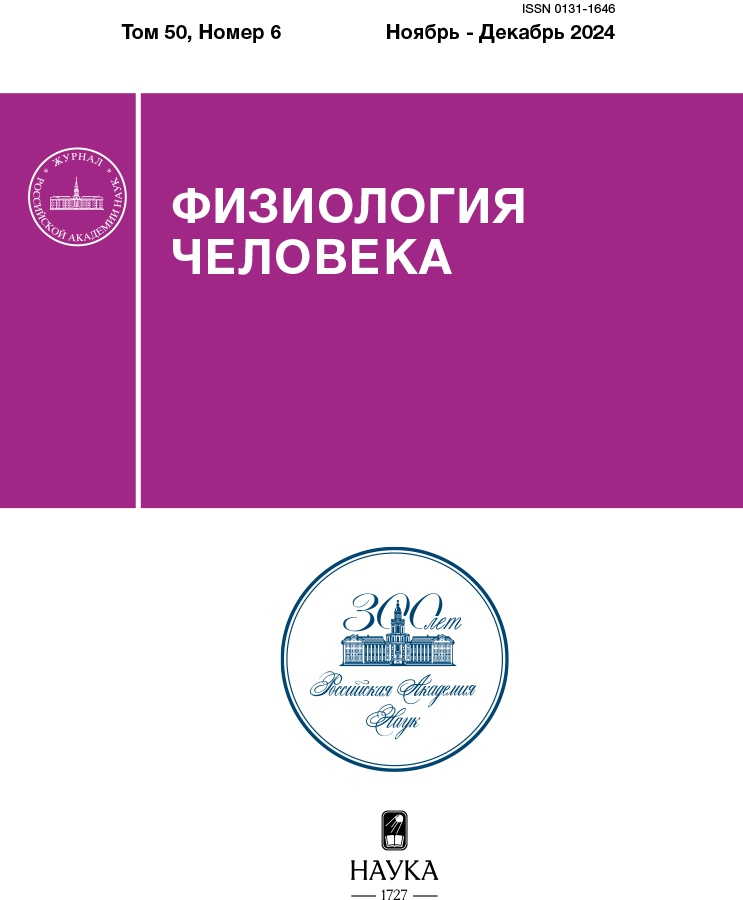The Use of Different Types of Mechanical Support Stimulation in the Correction of Motor Disorders
- Authors: Bekreneva M.P.1, Riabova A.M.1, Saveko A.A.1
-
Affiliations:
- Institute of Biomedical Problems, RAS
- Issue: Vol 50, No 6 (2024)
- Pages: 70-79
- Section: ОБЗОРЫ
- URL: https://clinpractice.ru/0131-1646/article/view/664098
- DOI: https://doi.org/10.31857/S0131164624060084
- EDN: https://elibrary.ru/AFOOBT
- ID: 664098
Cite item
Abstract
To date, there is evidence that support stimulation of the feet in neurological practice is a promising method for motor rehabilitation. The implementation of support stimulation is possible in various ways, but according to the results of modern research, mechanical stimulation of the feet demonstrates the greatest effectiveness. At the same time, the area, localization and intensity of mechanical support stimulation determine the activation features of the cutaneous mechanoreceptors of the soles, affecting evoked motor responses. From this perspective, the question of which type of mechanical support stimulation is the most practical and prospective remains relevant. In this review, we consider the currently existing approaches to mechanical support stimulation, as well as the results of their application in medical practice in order to improve motor abilities in patients.
Full Text
About the authors
M. P. Bekreneva
Institute of Biomedical Problems, RAS
Author for correspondence.
Email: mbekreneva@gmail.com
Russian Federation, Moscow
A. M. Riabova
Institute of Biomedical Problems, RAS
Email: mbekreneva@gmail.com
Russian Federation, Moscow
A. A. Saveko
Institute of Biomedical Problems, RAS
Email: mbekreneva@gmail.com
Russian Federation, Moscow
References
- Kozlovskaya I.B. Gravity and the tonic postural motor system // Human Physiology. 2018. V. 44. № 7. P. 725.
- Shenkman B.S., Mirzoev T.M., Kozlovskaya I.B. Tonic activity and gravitational control of the postural muscle // Human Physiology. 2021. V. 47. № 7. P. 744.
- Moore S.T., Dilda V., Morris T.R. et al. Long-duration spaceflight adversely affects post-landing operator proficiency // Sci. Rep. 2019. V. 9. № 1. P. 2677.
- Saveko A., Bekreneva M., Ponomarev I. et al. Impact of different ground-based microgravity models on human sensorimotor system // Front. Physiol. 2023. V. 14. P. 1085545.
- Ratushnyy A.Y., Buravkova L.B. Microgravity effects and aging physiology: Similar changes or common mechanisms? // Biochemistry. 2023. V. 88. № 1. P. 1763.
- Pandiarajan M., Hargens A.R. Ground-based analogs for human spaceflight // Front. Physiol. 2020. V. 11. P. 716.
- Nosikova I.N., Riabova A.M., Kitov V.V., Tomilovskaya E.S. Effectiveness of space countermeasures to prevent hyperreflexia // Integr. Physiol. V. 4. № 3. P. 335.
- Motanova E., Bekreneva M., Rukavishnikov I. et al. Application of space technologies aimed at proprioceptive correction in terrestrial medicine in Russia // Front. Physiol. 2022. V. 13. P. 921862.
- Levchenkova V.D., Semenova K.A. [Contemporary views of the morphological basis of infant cerebral palsy] // Zh. Nevrol. Psikhiatr. Im. S.S. Korsakova. 2012. V. 112. № 7–2. P. 4.
- Kremneva E.I., Saenko I.V., Chernikova L.A. et al. Specific activation of brain cortical areas in response to stimulation of the support receptors in healthy subjects and patients with focal lesions of the CNS // Human Physiology. 2013. V. 39. № 5. P. 524.
- Chernikova L.A., Kremneva E.I., Chervyakov A.V. et al. New approaches in the study of neuroplasticity process in patients with central nervous system lesion // Human Physiology. 2013. V. 39. № 3. P. 272.
- Viseux F.J.F., Lemaire A., Barbier F. et al. How can the stimulation of plantar cutaneous receptors improve postural control? Review and clinical commentary // Neurophysiol. Clin. 2019. V. 49. № 3. P. 263.
- Brognara L., Cauli O. Mechanical plantar foot stimulation in Parkinson's disease: A scoping review // Diseases. 2020. V. 8. № 2. P. 12.
- Viseux F.J.F. The sensory role of the sole of the foot: Review and update on clinical perspectives // Neurophysiol. Clin. 2020. V. 50. № 1. P. 55.
- Shvarkov S.B., Titova E.U., Mizieva Z.M. et al. [Application of integrated proprioceptive correction in motor recovery in patients with stroke] // Clin. Pract. 2011. V. 2. № 3. P. 3.
- Saenko I.V., Kremneva E.I., Glebova O.V. et al. New approaches in the rehabilitation of patients with central nervous system lesions based on the gravitational mechanisms // Human Physiology. 2017. V. 43. № 5. P. 591.
- Prityko A.G., Chebanenko N.V., Zykov V.P. et al. [Experience of application of proprioceptive modeling of walking in children of early age with motor disorders] // Russ. J. Child Neurol. 2019. V. 14. № 3. P. 16.
- Tomilovskaya E.S., Moshonkina T.R., Gorodnichev R.M. et al. Mechanical stimulation of the support zones of soles: The method of noninvasive activation of the stepping movement generators in humans // Human Physiology. 2013. V. 39. № 5. P. 480.
- Glebova O.V., Maksimova M.Yu., Chernikova L.A. [Mechanical stimulation of the foot support zones in the acute period of moderate and severe stroke] // Vestn. Vosstanov. Med. 2014. V. 1. № 1. P. 71.
- Khoroshun A.A., Piradov M.A., Chernikova L.A. [New technologies in rehabilitation: plantar imitator of bearing load for patients with Guillain-Barre syndrome] // Ann. Clin. Exp. Neurol. 2012. V. 6. № 1. P. 20.
- Kang G.E., Zahiri M., Lepow B. et al. The effect of daily use of plantar mechanical stimulation through micro-mobile foot compression device installed in shoe insoles on vibration perception, gait, and balance in people with diabetic peripheral neuropathy // J. Diabetes Sci. Technol. 2019. V. 13. № 5. P. 847.
- Maurer C., Mergner T., Bolha B., Hlavacka F. Human balance control during cutaneous stimulation of the plantar soles // Neurosci. Lett. 2001. V. 302. № 1. P. 45.
- Leelachutidej O., Srisawasdi G., Chadchavalpanichaya N., Sukthomya S. Influence of textured surface insoles on postural control in older adults // J. The Department of Medical Services. 2023. V. 48. № 2. P. 45.
- Qiu F., Cole M.H., Davids K.W. et al. Effects of textured insoles on balance in people with Parkinson's disease // PLoS One. 2013. V. 8. № 12. P. e83309.
- Yumin T.E., Simsek T.T., Sertel M. et al. The effect of foot plantar massage on balance and functional reach in patients with type II diabetes // Physiother. Theory Pract. 2017. V. 33. № 2. P. 115.
- Wikstrom E.A., Song K., Lea A., Brown N. Comparative effectiveness of plantar-massage techniques on postural control in those with chronic ankle instability // J. Athl. Train. 2017. V. 52. № 7. P. 629.
- Huang M., Yick K.L., Ng S.P. et al. The effect of support surface and footwear condition on postural sway and lower limb muscle action of the older women // PLoS One. 2020. V. 15. № 6. P. e0234140.
- Brognara L., Navarro-Flores E., Iachemet L. et al. Beneficial effect of foot plantar stimulation in gait parameters in individuals with Parkinson's disease // Brain Sci. 2020. V. 10. № 2. P. 69.
- Tedeschi R. Automated mechanical peripheral stimulation for gait rehabilitation in Parkinson's disease: A comprehensive review // Clin. Park. Relat. Disord. 2023. V. 9. P. 100219.
- Kleiner A., Galli M., Gaglione M. et al. The Parkinsonian gait spatiotemporal parameters quantified by a single inertial sensor before and after automated mechanical peripheral stimulation treatment // Parkinsons Dis. 2015. V. 2015. P. 390512.
- Kleiner A.F.R., Souza Pagnussat A., Pinto C. et al. Automated mechanical peripheral stimulation effects on gait variability in individuals with Parkinson disease and freezing of gait: A double-blind, randomized controlled trial // Arch. Phys. Med. Rehabil. 2018. V. 99. № 12. P. 2420.
- Prusch J.S., Kleiner A.F.R., Salazar A.P. et al. Automated mechanical peripheral stimulation and postural control in subjects with Parkinson's disease and freezing of gait: a randomized controlled trial // Funct. Neurol. 2018. V. 33. № 4. P. 206.
- Zelada-Astudillo N., Moreno V.C., Herrera-Santelices A. et al. Effect of the combination of automated peripheral mechanical stimulation and physical exercise on aerobic functional capacity and cardiac autonomic control in patients with Parkinson's disease: a randomized clinical trial protocol // Trials. 2021. V. 22. № 1. P. 250.
- Marques N.R., Kuroda M.H., Moreno V.C. et al. Effects of automatic mechanical peripheral stimulation on gait biomechanics in older adults with Parkinson's disease: a randomized crossover clinical trial // Aging Clin. Exp. Res. 2022. V. 34. № 6. P. 1323.
- Barbic F., Galli M., Dalla Vecchia L. et al. Effects of mechanical stimulation of the feet on gait and cardiovascular autonomic control in Parkinson's disease // J. Appl. Physiol. (1985). 2014. V. 116. № 5. P. 495.
- Lirani-Silva E., Vitório R., Barbieri F.A. et al. Continuous use of textured insole improve plantar sensation and stride length of people with Parkinson's disease: A pilot study // Gait Posture. 2017. V. 58. P. 495.
- Asgari N., Yeowell G., Sadeghi-Demneh E. A comparison of the efficacy of textured insoles on balance performance in older people with versus without plantar callosities // Gait Posture. 2022. V. 94. P. 217.
- Foisy A., Gaertner C., Matheron E., Kapoula Z. Controlling posture and vergence eye movements in quiet stance: effects of thin plantar inserts // PLoS One. 2015. V. 10. № 12. P. e0143693.
- Viseux F., Barbier F., Villeneuve P. et al. Low additional thickness under the toes could change upright balance of healthy subjects // Neurophysiol. Clin. 2018. V. 48. № 6. P. 397.
- Wang J., Qiao L., Yu L. et al. Effect of customized insoles on gait in post-stroke hemiparetic individuals: A randomized controlled trial // Biology. 2021. V. 10. № 11. P. 1187.
- Strzalkowski N.D., Incognito A.V., Bent L.R., Millar P.J. Cutaneous mechanoreceptor feedback from the hand and foot can modulate muscle sympathetic nerve activity // Front. Neurosci. 2016. V. 10. P. 568.
- Seri F.A.S., Abd Hamid A.I., Abdullah J.M. et al. Investigating cortical networks from vibrotactile stimulation in young adults using independent component analysis: an fMRI study // Neurosci. Res. Notes. 2023. V. 6. № 3. P. 194.
- Manyakhina I.V., Mirkin A.S., Turbina L.G. et al. Use of a vibrostimulatory shoe as a component in the treatment of patients suffering cerebral insult // Neurosci. Behav. Physiol. 1985. V. 15. № 6. P. 480.
- Khalifeloo M., Naghdi S., Ansari N.N. et al. A study on the immediate effects of plantar vibration on balance dysfunction in patients with stroke // J. Exerc. Rehabil. 2018. V. 14. № 2. P. 259.
- Önal B., Sertel M., Karaca G. Effect of plantar vibration on static and dynamic balance in stroke patients: A randomised controlled study // Physiotherapy. 2022. V. 116. P. 1.
- Novak P., Novak V. Effect of step-synchronized vibration stimulation of soles on gait in Parkinson's disease: A pilot study // J. Neuroeng. Rehabil. 2006. V. 3. P. 9.
- Cham M.B., Mohseni-Bandpei M.A., Bahramizadeh M. et al. The effects of vibro-medical insole on sensation and plantar pressure distribution in diabetic patients with mild-to-moderate peripheral neuropathy // Clin. Biomech. (Bristol, Avon). 2018. V. 59. P. 34.
- Brognara L., Mazzotti A., Di Martino A. et al. Wearable sensor for assessing gait and postural alterations in patients with diabetes: a scoping review // Medicina. 2021. V. 57. № 11. P. 1145.
- Hatton A.L., Chatfield M.D., Cattagni T., Vicenzino B. The effects of vibrating shoe insoles on standing balance, walking, and ankle-foot muscle activity in adults with diabetic peripheral neuropathy // Gait Posture. 2024. V. 111. P. 8.
- Lauzier L., Kadri M.A., Bouchard E. et al. Vibration of the whole foot soles surface using an inexpensive portable device to investigate age-related alterations of postural control // Front. Hum. Neurosci. 2021. V. 15. P. 719502.
- Strzalkowski N.D.J., Peters R.M., Inglis J.T., Bent L.R. Cutaneous afferent innervation of the human foot sole: what can we learn from single-unit recordings? // J. Neurophysiol. 2018. V. 120. № 3. P. 1233.
Supplementary files











